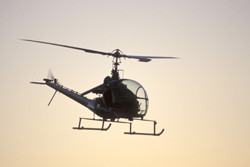New designs for green rotorcraft
The Clean Sky Joint Technology Initiative (JTI) is Europe's most ambitious aerospace research programme yet. It focuses on quickly producing full-scale demonstrators of the most promising eco-friendly air transport concepts. The EU-funded project 'Aerodynamic design optimisation of a helicopter fuselage including a rotating rotor head' (ADHERO)(opens in new window) made an important contribution to the Green Rotorcraft Consortium sub-programme. ADHERO's overall objective was to reduce parasitic drag (primarily because of skin friction, roughness and pressure drag) on twin-engine light-utility helicopters. Twin-engine light-class helicopters play important roles in search-and-rescue missions, law enforcement and supply of personnel to offshore platforms. Scientists targeted fast flight conditions and elimination of the increased downforce on the fuselage that typically characterises a rotorcraft in cruise flight. The approach aimed at drag reduction of landing skids, rotor head and fuselage. Researchers manufactured an entirely new wind tunnel model with modularity to facilitate exchange of components and modifications for drag reduction based on test results. The new model employed a horizontal sting connected to the fuselage through a part of the tail boom, thus reducing interaction with flow fields. Wind tunnel testing and numerical simulations of the baseline configuration provided scientists with valuable data to conduct a detailed study of both global and local flow parameters. Results showed that the greatest part of the parasitic drag caused by the landing skids stemmed from the interference drag on the rear fuselage upsweep. Furthermore, a means to confine an increase in downforce was identified, such as a hubcap that produces lift. The team investigated and tested different hubcap designs and modified mast fairing variants to further reduce drag. Simulations enabled them to enhance knowledge of the wake turbulence sources, given that mast fairing generates counter-rotating vortices and has the potential to mitigate tail shake vibration. Two different combinations of passive flow control devices hold great promise for reducing the aft-body drag. ADHERO disseminated its results through presentations, workshops, conferences and publications in peer-reviewed journals. Given that the technology readiness level is six, or pre-production entry level, the concepts could be commercialised within a few years of project-end.




